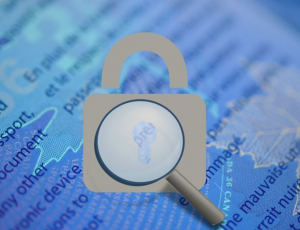Fluorescence Microscopy
Forensic examiners require tools that are diverse, simple to use, and can analyse most forensic evidence. Fluorescence Microscopy is among them. Fluorescence microscopes detect autofluorescence or induced fluorescence of organic or inorganic substances following illumination/irradiation with specified wavelengths of light. A fluorescence microscope typically has a Mercury/Xenon arc lamp/high-power LEDs and lasers/X-ray tube, an excitation and emission filter, and a dichroic mirror or beam splitter.
Forensic samples are often examined using X-ray microscopes or fluorescence microscopes. It combines elemental analysis and microscopy. Horiba Instruments, Carl Zeiss Microscopy, Rigaku, and others make sophisticated XRF systems that need little sample preparation without compromising sample integrity. These technologies speedily scan forensic samples with a tiny X-ray beam to provide high-quality images. Depending on the XRF analyzer, many components may be scanned.
Forensic applications Fluorescence Microscopy:
Examination of semen and seminal stains: Traditional sperm staining is non-specific, laborious, and relies on morphology for identification. Fluorescent microscopy now uses automated methods to identify fluorescently labelled sperm cells without losing DNA quantity or quality.
Fiber testing: A strong forensic light source with multiple wavelengths and angles may help find and collect the most fibres at a crime scene. Fibers may glow. Synthetic fibres may glow owing to colouring, stretching, weaving, straining, etc., whereas organic fibres naturally do. Fabrics utilise various dyes. Fibers that glow differently from the backdrop are worth collecting. The forensic laboratory may examine and analyze it after collection to determine its provenance.
Examination of Gunshot Residue: Gunshot residue (GSR) may travel up to 2 meters depending on the gun/firearm. GSR is often deposited on victims, assailants, and onlookers, but it is widely diffused. GSR concentration decreases with weapon-to-victim distance. The GSR marks the wound if discharged within 30 cm. GSR and pattern analysis reveal firing distance, conditions, and chemical composition. The suspect’s recovery or identification of a particular GSR indicates his/her presence near a fired weapon, handling of a firearm, or firing the weapon, or it may be used to verify the eyewitness’s alibi.
Examining latent fingerprints: Forensic light sources (various wavelengths) were first employed to identify latent fingerprints at crime scenes. Sweat contains several UV-fluorescent components. Sweat fluorescence may reveal latent prints on thin plastic bags, inflexible duct tape, thin aluminium foil, strongly grained wood, concrete wall, brick, printed glossy magazine pages, paper goods, and textured delicate and contaminated surfaces with adequate detail. Fluorescent dyes and powders like Rhodamine 6G, Basic Yellow, and DFO may help boost fluorescence.
Also Read: Forensic Science Jobs in India
Examination of Hair samples: In important cases, fluorescence staining is needed to prove the presence of nucleus/DNA in forensic evidence. Manufacturer instructions cover fluorescence staining. Only coloured or leached hair fluoresces. Fluorescence hair microscopy may assess drug and alcohol abstinence. Chemically treating hair (dye, hair colour, etc.) changes drug components, making them undetectable during examination. The helps identify chemically treated hair.
Detection of Drugs of abuse and prohibited substances: Morphine, heroin, cotinine, LSD, and others naturally glow under an alternate light source. Illicit substances’ fluorescence aids detection. The methanol-extracted LSD sample on filter paper, dried, and treated with UV light (360nm) shows blue fluorescence.
Detection of Teeth and bones: Bones and teeth glow, making them easy to find at crime scenes, archaeological sites, underwater, fields, labs, low light, or at night using alternative light sources (ALS) (Miranda et al, 2017). Bones and teeth have strong and homogeneous autofluorescence, which may help find skeletal remains.
Examination of Questioned Documents: Fluorescence microscopy is used to identify stroke sequences, ink, and paper in forged documents. Under a fluorescence microscope passport, cash notes, ID cards, tax stamps, certificates, and more may be distinguished from fakes. For detection, fluorescent pigments are intentionally added to inks and sheets in most government-issued, and other significant documents.
Also Read: What is Cyber Security?
Examination of Historical and archaeological objects and paintings: X-Ray Fluorescence microscopic examination is the major non-destructive technology for cultural heritage conservation. XRF microscopy shows fluorescence in inks, colours, papers, and canvas used to produce paintings, antique handwritten manuscripts and objects, revealing their authenticity. The tool also performs precise and accurate qualitative and quantitative multi-elemental analysis (typically all elements from sodium to uranium) of pigments in manuscripts, paintings, ceramics, metal alloys, coins, sculptures, and other artefacts.
Examination of Soil samples: Sometimes soil evidence might assist the police locate the perpetrator or victim. Soil samples are distinctive according to their colour, mineral content, flora, fauna, microbes, and provenance. A soil inspection under a fluorescent microscope may reveal the location.
Written By:
Dr. Vineeta Saini
Assistant Professor
Department of Forensic Science
Faculty of Science
SGT University



